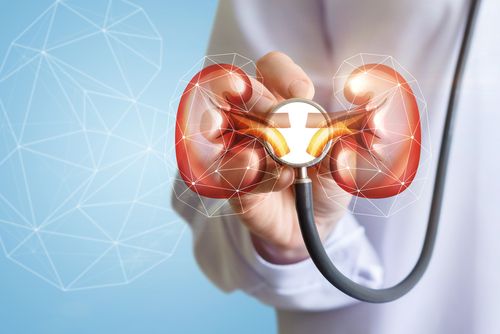Preventive Plasma Therapy Reduces Risk of Kidney Transplant Failure, Austrian Study Shows

Plasma exchange (PEX) therapy given before and after kidney transplants reduces the risk of disease relapse and transplant failure in people with atypical hemolytic uremic syndrome (aHUS), according to an Austrian study.
The work also suggested that while treatment with Soliris (eculizumab) may not be necessary for all high-risk aHUS patients after transplant, it is crucial for transplant success in cases of PEX failure or intolerance.
Titled “Preemptive plasma therapy prevents atypical hemolytic uremic syndrome relapse in kidney transplant recipients,” the study was published in the European Journal of Internal Medicine.
People with aHUS often develop kidney failure due to the accumulation of abnormal blood clots that block small blood vessels and lead to their destruction.
Kidney transplant has the potential to restore kidney function. However, these patients have a high risk of disease relapse, which is associated with graft loss — the loss of function in the transplanted kidney — in 50% of cases.
Preventive strategies to avoid disease relapse and kidney transplant failure in these patients currently include peritransplant — before and after transplant — PEX treatment, followed by plasma infusions (PI) or Soliris treatment.
Soliris, developed by Alexion, is an aHUS-specific therapy that targets the complement system, a part of the immune system abnormally activated in aHUS.
The therapy is one of the most expensive treatment options currently available, however, and there is limited data on the efficacy of preventive PEX/PI therapy in these patients. Thus, additional data on the effectiveness of plasma exchange are needed.
To learn more, researchers in Austria sought to evaluate the effectiveness of preventive PEX/PI therapy in people with aHUS receiving a kidney transplant at the Medical University of Vienna.
The team retrospectively analyzed the clinical and genetic data of 19 aHUS patients, including 11 women and eight men, who received a total of 32 kidney transplants and were followed for more than a year.
Since 2005, most aHUS patients receiving a kidney transplant at the medical center have been treated with preventive PEX (40 ml/kg) immediately before transplant and in the following three days. These individuals were then given preventative PEX three-times weekly until stabilization of kidney function, followed by weekly plasma infusions (20 ml/kg). Patients showing plasma intolerance or aHUS disease relapse — identified as therapy failure — were switched to Soliris treatment.
The data showed patients were diagnosed with aHUS at a mean age of 26.6 years and had their first kidney transplant at a mean of 30.5 years; five people received more than one kidney transplant. A total of 15 people (79%) carried mutations considered high-risk for aHUS relapse after kidney transplant.
Eight patients had received preventive plasma exchange therapy for eight kidney transplants and 13 patients — including two people who received preventive plasma therapy for their last transplant — had received no preventive therapy for 24 transplants.
The results showed that there was no kidney transplant failure among patients receiving preventive therapy. These patients also showed a significantly extended kidney survival (2,373 days) compared with that of patients who did not receive preventive treatment (411 days). Preventive plasma therapy also reduced the frequency of aHUS relapses.
Among the preventive therapy group, three people showed stable kidney function without Soliris treatment, and two of them did not need to receive PI due to stable kidney function right after transplant. Four patients (50%) were switched to Soliris due to plasma intolerance (two patients) or aHUS relapse (two patients).
In addition, preventive plasma therapy, aHUS relapse, and year of kidney transplant procedure (more recent or not) significantly affected the overall survival of the transplanted kidney. This association, with the year of transplant, reflects the improvements in pre- and post-transplant care over time, the researchers said.
On the other hand, the team found no significant association between the patients’ genetic risk category and kidney survival, which they hypothesized may be related to the relatively low number of patients in this study.
These findings suggest that preventive plasma therapy, along with Soliris in selected cases, is effective in preventing disease relapse and improving graft survival after kidney transplant in aHUS patients.
“Our findings further suggest that [Soliris] might not be necessary for all genetically high-risk aHUS patients receiving a kidney graft, however a controlled study in a larger cohort is necessary,” the researchers said.
“The availability of [Soliris] as a rescue-drug in case of therapy failure or intolerance is indispensable,” they added.






